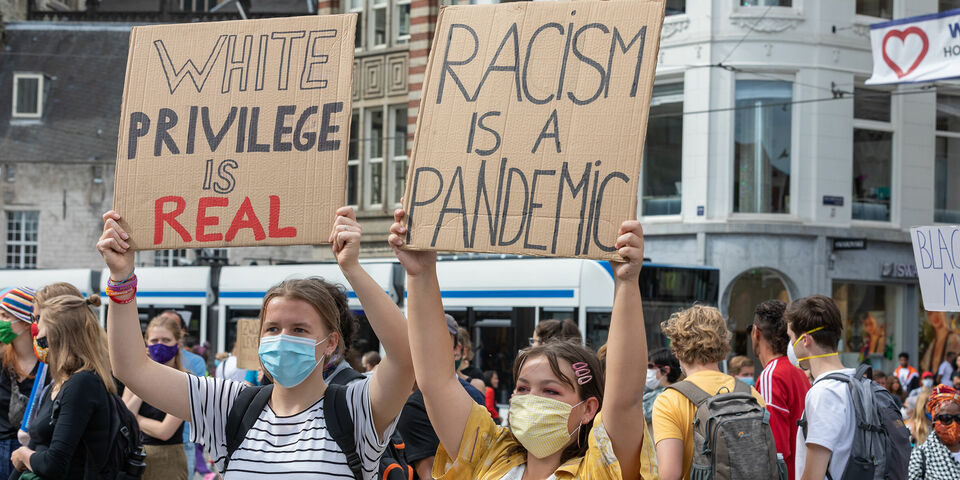It was immediately clear that the protests are about much more than Mr Floyd’s death alone; they have served to highlight the systemic discrimination of people of colour. Something that is at play in every aspect of modern societies, including higher education.
In Rotterdam, the university and university of applied sciences recently jointly reported students to the police who had crossed the line in a WhatsApp group. At Leiden University, students wrote a contentious phrase ("free of foreign blemishes") on a blackboard.
Those actions can be viewed as isolated incidents - but that would be too easy and nothing would change. Foreign students and researchers are still greeted with an endless stream of jokes and comments about their heritage. And these tend to be far less innocent than those jokers think.
System
You can also delve deeper and look at the results of the system itself. Some measures that apply in higher education probably weren’t intended to be racist, but do have a clear negative impact on students with a migration background.
In September 2015, teacher training for primary education suddenly became whitewashed. Students from a non-Western background started to avoid these programmes. A year later, the new cohort was even whiter. This was due to the newly imposed entry requirements; new students were required to sit a number of entrance examinations before being admitted to a programme.
Those entry requirements were intended to boost the quality of teacher training graduates, which was necessary, but other measures that would not negatively affect students of colour were also conceivable. For example, why would you not allow students the time they need to make up for any study delays, if they need it? The problem is that the system does not allow for it.
Enrolment restriction
Last week, the Education Inspectorate outlined what happens when programmes decide to implement an enrolment restriction. Programmes are then required to select their students, a practice that tends to disadvantage potential students from a non-Western background. The difference in the chances of being admitted is about five percentage points.
Although this does not seem like much, it is striking. Now isn’t the first time this phenomenon has been observed. You can’t say that an individual is personally discriminated against in this case, but some groups do have a harder time making the cut. The same applies to students with a disability.
The counterargument in these cases is that self-selection plays a role, as these students may be afraid to take part in the selection process. This fact does not mean the measure is neutral. Given the opportunity, you could tell individual students not to be discouraged, but when an entire group falls behind, education should ask itself: is selection a good tool?
Stacked up
When problems begin to stack up, things get particularly painful. Men are not performing as well as women, graduates of vocational education struggle in the first year of their university of applied sciences programmes and students from a non-Western background are also at a disadvantage. Whatever the reason, male vocational education graduates from non-Western backgrounds are three times less likely to succeed.
A tragedy of epic proportions. Young people of colour also often enrol in universities of applied sciences after completing vocational education and sometimes their prior education is held responsible for their issues, potentially resulting in a misdiagnosis.
The current state of affairs is no longer visible to outsiders. The detailed statistics about ancestry that universities never shared, have now also been removed from the websites of universities of applied sciences due to stricter privacy regulations.
What we can do, however, is take a look at the first-year students at universities of applied sciences in 2011. After five years, almost half (49 percent) had obtained their degree and almost 40 percent of all male students. For male students from a non-Western background this figure was even lower: 27 percent. And the ones with a vocational diploma: a mere 23 percent. Like banging the gavel three times.
Diversity
So what can institutes of higher education do to turn the tide? Erasmus TV broadcast an interesting conversation between a student, a lecturer, and a diversity officer, in light of the protests in the city. The interview showed that one of the solutions to combating racism in higher education lies in ensuring institutions employ a diverse group of teachers.
A step that could make a difference. However, it’s important to recognize that good intentions are not enough to make racism disappear altogether.


Discussion